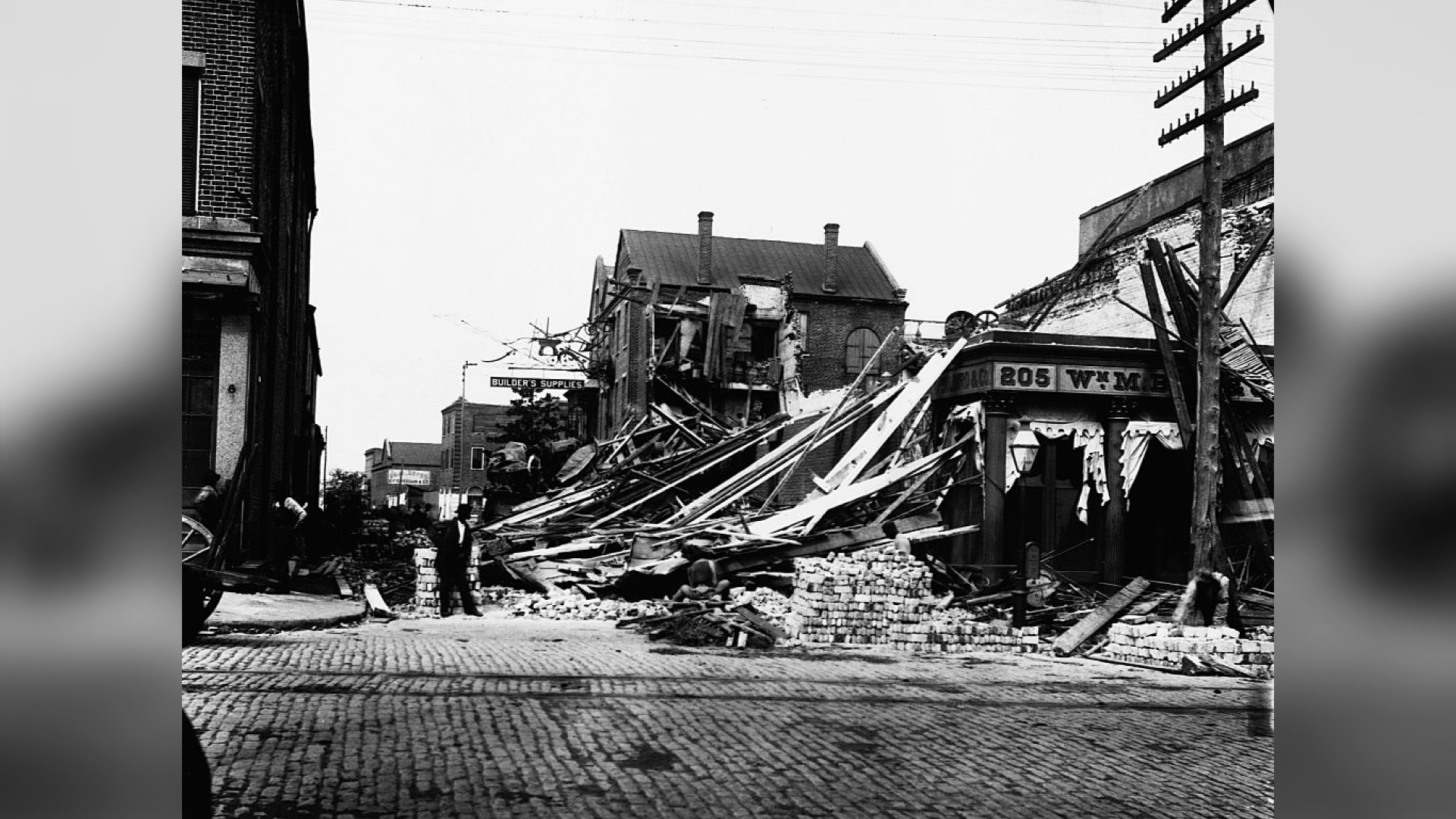Aftershocks from devastating 1886 Charleston earthquake may still be hitting the US today
Researchers have found evidence that aftershocks may continue for centuries after a major earthquake — though the finding is still open for debate.

North America might still be experiencing aftershocks from massive earthquakes that hit the continent over 200 years ago, a new study has found.
Aftershocks are typically small earthquakes that strike after a major earthquake as a fault, which slipped to cause the main earthquake, readjusts. They normally hit within days to years of the initial seismic event, but some researchers believe they can keep happening for centuries.
In a new study, published Nov. 7 in the Journal of Geophysical Research: Solid Earth researchers looked at the origins of earthquakes in what geologists call stable North America — the central and eastern U.S. and part of eastern Canada that are located away from plate boundaries — where earthquakes are less common. The authors identified earthquakes that appear to be aftershocks from major earthquakes that struck the Missouri-Kentucky border between 1811 and 1812, as well as the 1886 Charleston earthquake that hit South Carolina.
To establish whether modern earthquakes in this region are caused by long-lived aftershocks, background seismicity — the normal background rate of earthquakes, or seismic activity, researchers would expect in a region — or both, the researchers looked at pairs of seismic events linked in the earthquake records through distance, time and magnitude.
They looked at earthquakes that occurred within a 155-mile-radius (250 kilometers) from each of the major historic quakes. If an earthquake hit close enough to the original epicenter, the authors say it could be considered an aftershock.
"If the distance between a pair of earthquakes is closer than expected from background events, then one earthquake is likely the aftershock of the other," lead author Yuxuan Chen, a geoscientist at Wuhan University in China, said in a statement.
Sign up for the Live Science daily newsletter now
Get the world’s most fascinating discoveries delivered straight to your inbox.
The researchers found that three large earthquakes that happened in 1811 and 1812 may have been responsible for around 23% of earthquakes that occurred in the New Madrid seismic zone — which covers parts of Missouri, Arkansas, Tennessee, Kentucky and Illinois — between 1980 and 2016. In South Carolina, the researchers linked up to 72% of present-day earthquakes to the 1886 Charleston earthquake, a magnitude of around 7 event that devastated the region and was responsible for the deaths of 60 people.
However, Susan Hough, a geophysicist in the Earthquake Hazards Program at the U.S. Geological Survey, who was not involved in the research, said the distribution of earthquakes across the landscape could be influenced by factors unrelated to aftershocks, such as steady movement along a fault, called creep.
"In some respects, the earthquakes look like aftershocks if you look at the spatial distribution, but earthquakes could be tightly clustered for a couple of reasons," she said in the statement. "One is that they're aftershocks, but also you could have a process of creep going on that's not part of an aftershock process. Exactly what their results mean is still open to question."
The researchers' findings suggested that earthquakes are likely a mix of aftershocks and background seismic activity, with background seismic activity the dominant cause of earthquakes in at least two of the three areas studied. Lots of background seismic activity could mean strain is accumulating and big earthquakes could strike in the future. "To come up with a hazard assessment for the future, we really need to understand what happened 150 or 200 years ago," Hough said.

Patrick Pester is the trending news writer at Live Science. His work has appeared on other science websites, such as BBC Science Focus and Scientific American. Patrick retrained as a journalist after spending his early career working in zoos and wildlife conservation. He was awarded the Master's Excellence Scholarship to study at Cardiff University where he completed a master's degree in international journalism. He also has a second master's degree in biodiversity, evolution and conservation in action from Middlesex University London. When he isn't writing news, Patrick investigates the sale of human remains.










